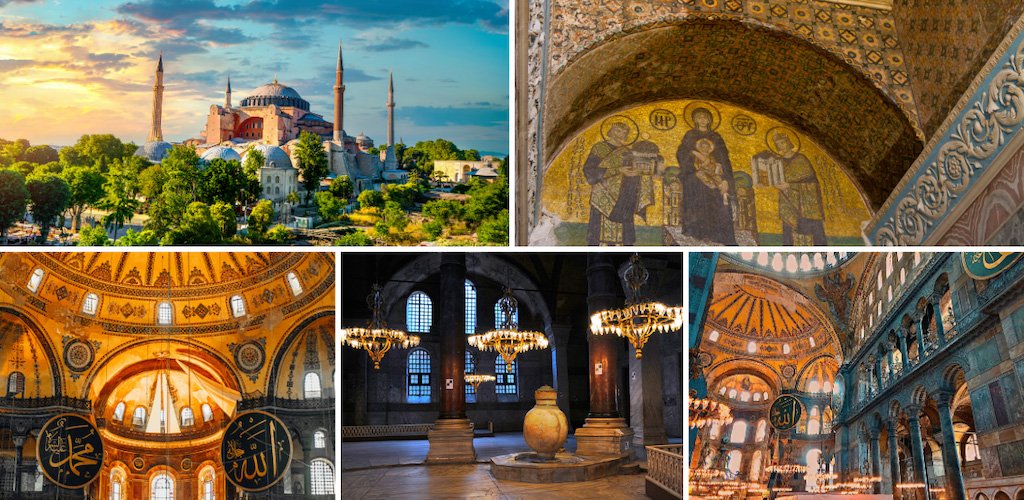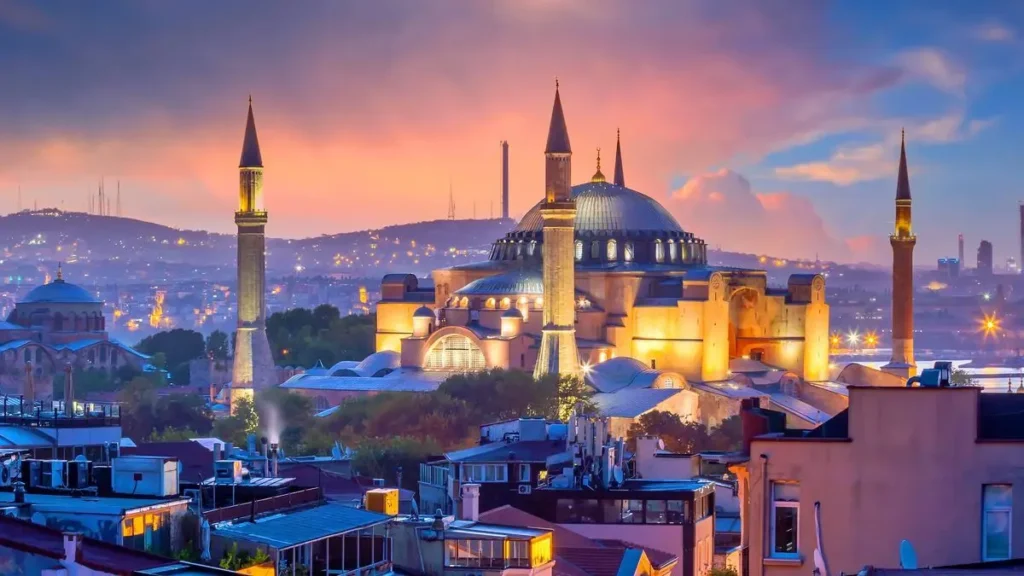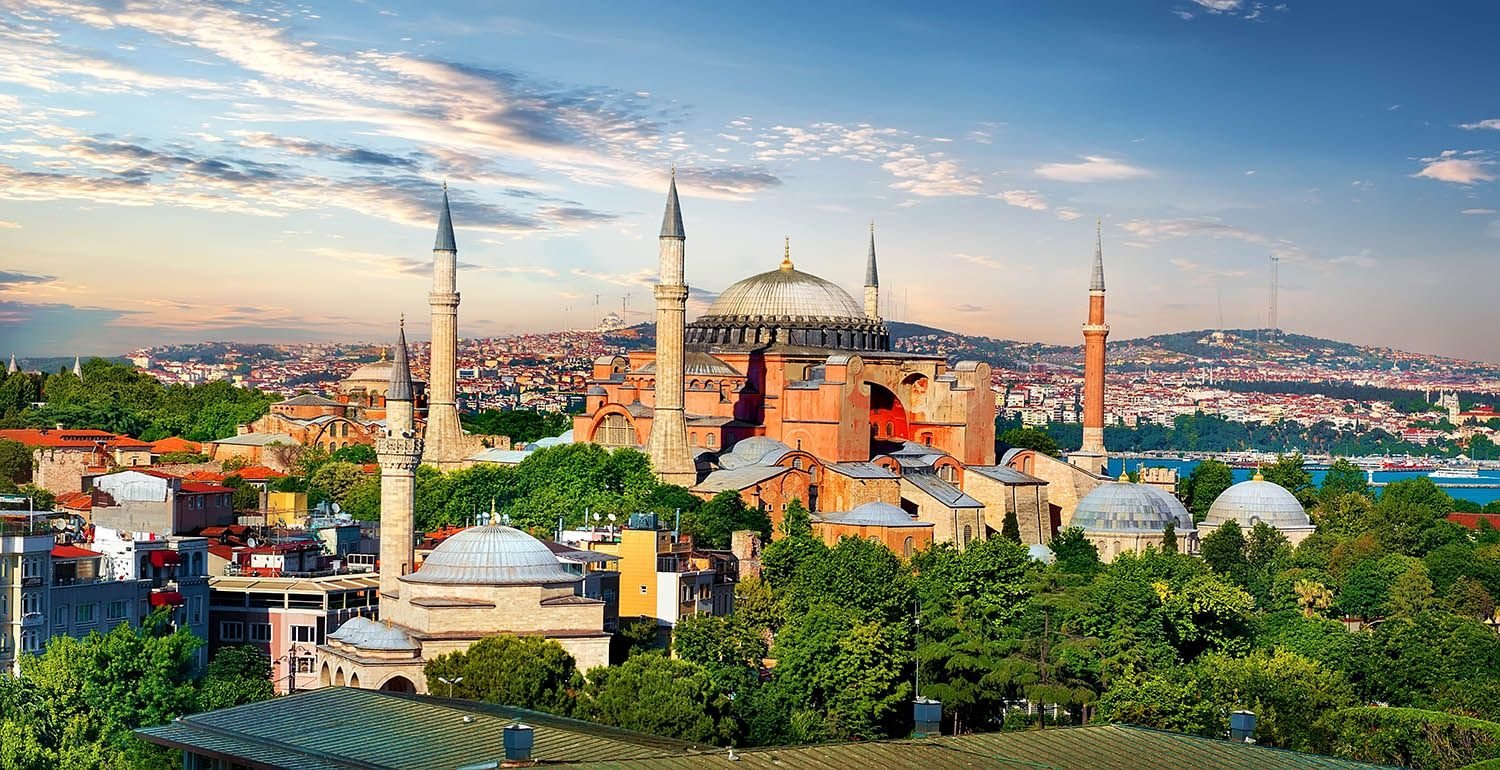Ayasofya Mosque
- History and Culture
- Posted 1 year ago
- Go Back
Hagia Sophia: A Monument of Historical and Cultural Significance
Hagia Sophia, also known as Ayasofya in Turkish, stands as one of the most iconic and historically significant buildings in the world. Located in Istanbul, Turkey, this monumental structure has served various roles throughout its nearly 1,500-year history, reflecting the complex and layered history of the region.

A Masterpiece of Byzantine Architecture
Hagia Sophia was originally built as a cathedral in the Byzantine Empire under the reign of Emperor Justinian I. Construction began in 532 AD and was completed in a remarkably short span of about five years, opening its doors in 537 AD. The church was designed by the mathematician Anthemius of Tralles and the physicist Isidore of Miletus, who crafted a structure that was revolutionary for its time.
The most striking feature of Hagia Sophia is its massive dome, which spans 31 meters in diameter and seems to float above the central nave, supported by an ingenious system of pendentives. The dome was an architectural marvel, setting a new standard for large-scale domed buildings and influencing the design of churches and mosques for centuries to come.
From Church to Mosque
For almost a thousand years, Hagia Sophia was the largest cathedral in the world and the center of Eastern Orthodox Christianity. It was the seat of the Patriarch of Constantinople and the site of many significant religious events, including imperial coronations. However, this changed dramatically in 1453 when Constantinople fell to the Ottoman Empire under Sultan Mehmed II.
Upon the city’s conquest, Hagia Sophia was converted into a mosque. The Ottomans added Islamic architectural elements, including minarets, a mihrab (prayer niche), and a minbar (pulpit). The Christian mosaics were covered with plaster, though many were preserved beneath, and the structure began to function as a central mosque in Istanbul, the capital of the Ottoman Empire.

A Museum and Then a Mosque Again
In 1935, following the establishment of the Republic of Turkey, Mustafa Kemal Atatürk, the founder and first President of Turkey, secularized Hagia Sophia and transformed it into a museum. This decision was part of Atatürk’s broader effort to modernize and secularize the new Turkish state. As a museum, Hagia Sophia became a symbol of the coexistence of Christian and Islamic cultures, attracting millions of visitors from around the world each year.
However, in 2020, Hagia Sophia was reconverted into a mosque by a decree from Turkey’s President Recep Tayyip Erdoğan. This move was met with both domestic support and international controversy, reflecting the building’s enduring significance as a cultural and religious symbol.
Art and Architecture
Hagia Sophia’s interior is adorned with an extraordinary blend of Christian and Islamic art. The vast nave, with its marble pillars and intricate mosaics, showcases the artistic achievements of the Byzantine Empire. The mosaics, some of which date back to the 9th and 10th centuries, depict various religious scenes, including images of Christ, the Virgin Mary, and Byzantine emperors.
After its conversion to a mosque, Islamic calligraphy was added, with large medallions bearing the names of Allah, the Prophet Muhammad, and the early caliphs prominently displayed. The juxtaposition of these different artistic traditions within the same space makes Hagia Sophia a unique testament to the historical interaction between Christian and Islamic cultures.

Cultural and Religious Significance
Hagia Sophia is more than just an architectural marvel; it is a symbol of the complex history of Istanbul and the broader region. It represents the shifting tides of empires, the convergence of different religions, and the rich cultural tapestry of the Eastern Mediterranean.
For many Christians, Hagia Sophia remains a significant symbol of their religious heritage, while for Muslims, it stands as a reminder of the Ottoman Empire’s legacy. The building’s status as a UNESCO World Heritage site underscores its global importance, not just as a relic of the past but as a living part of cultural and religious history.
Conclusion
Hagia Sophia continues to captivate the world with its grandeur, history, and the complex interplay of cultures it represents. Whether viewed as a masterpiece of architecture, a sacred space, or a symbol of historical change, Hagia Sophia stands as a testament to the enduring power of human creativity and faith. Its walls have witnessed the rise and fall of empires, the blending of cultures, and the passage of time, making it one of the most significant monuments in the world.

Get a free quote
Nearby Hospitals
No results available

